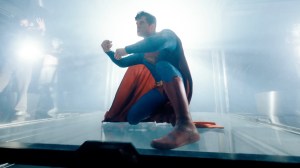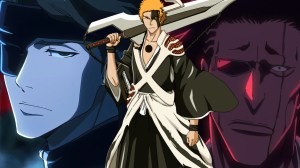From her very first appearance as Anakin Skywalker’s headstrong Padawan in Star Wars: The Clone Wars, Ahsoka Tano carved out a unique space in Star Wars canon, solidifying herself as one of the most pivotal characters in the saga. While her evolution has been meticulously crafted by Dave Filoni, inspiration often comes from surprising corners of the creative universe. It’s a testament to Filoni’s diverse artistic palate that the very essence of Ahsoka Tano, a character so intrinsically linked to the Star Wars saga, was subtly yet profoundly shaped by the untamed spirit and unwavering conviction of a certain Studio Ghibli heroine: Princess Mononoke. On multiple occasions, Filoni has discussed how San (Princess Mononoke) influenced his creation of Ahsoka.
Videos by ComicBook.com
The parallels, once noticed, are impossible to unsee, painting a richer and more detailed picture of influences behind one of Star Wars’ most beloved characters.
Both Characters Possess Distinctive Facial Markings That Symbolize Their Identity and Allegiance

The visual parallels between Ahsoka Tano and San extend beyond their shared thematic journey, influencing Ahsoka’s very design. Filoni has explicitly acknowledged this, including during a panel at Star Wars Celebration Japan. On the same panel, Filoni also revealed that for years, he had wanted to incorporate a scene where Ahsoka rides a wolf, which is a direct parallel to San. Early concept art for Ahsoka featured a skirt reminiscent of San’s, and Ahsoka’s facial markings bear a striking resemblance to the red war paint San applies, often interpreted as symbolic “wolf fangs.” Furthermore, Ahsoka’s agile, acrobatic fighting style, sometimes employing a reverse lightsaber grip, echoes San’s fluid and fierce combat. This visual homage reinforces the deep-seated connection between these two fierce, independent, and nature-attuned heroines.
[RELATED: Star Wars Women Power Ranking: From Force-Wielders to Rebel Leaders]
Beyond the shared fighting styles and early costume considerations, the most striking visual link between Ahsoka and San lies in their unique facial markings. Ahsoka’s distinctive white Togruta montrals are adorned with intricate, dark blue patterns that, while natural to her species, gain symbolic weight through her journey. These markings emphasize her alien nature, her connection to a culture outside human norms, and visually set her apart within the Jedi Order. Similarly, San’s prominent red war paint, applied in fierce, angular strokes, explicitly transforms her face into a representation of her wolf family and her unwavering loyalty to the forest. These markings are not merely aesthetic; they are declarations of identity and allegiance, signifying their connection to a wilder, more primal force, and visually cementing their roles as fierce, independent spirits who stand apart from conventional society.
Both Young Women Grapple With The Weight of Their Respective Worlds’ Moral Ambiguities

One of the most compelling parallels between Ahsoka Tano and Princess Mononoke (San) lies in their early immersion in a world riddled with moral complexities and their struggle to navigate these treacherous waters. Ahsoka, a child of the Jedi Order, is thrust into the Clone Wars, a conflict where the lines between good and evil are constantly blurred. She witnessed firsthand the devastating toll of war, the moral compromises made by even the most honorable Jedi, and the inherent flaws within the very institution she serves. Her disillusionment with the Jedi Council after being framed for a crime she didn’t commit forces her to confront the limitations and occasional hypocrisy of the system in which she was raised.
Similarly, San grows up amidst a brutal conflict between humanity and the natural world. Raised by wolves, she embodies the fury of the forest, utterly committed to defending it against the encroaching destruction wrought by Lady Eboshi and Iron Town. Yet, even in her fierce dedication, she encounters moments of human suffering and the desperate struggle for survival that complicates her black-and-white view of the world.
Both characters are forced to mature rapidly, shedding the simplistic ideals of their youth to confront the nuanced and often painful realities of their struggles. They are not merely fighters; they are moral compasses, constantly recalibrating their understanding of right and wrong in a world that’s made up of shades of gray. This shared burden of navigating ethical difficulties and the personal growth that comes from it is a foundational element in both their powerful stories.
Their Deep Empathy for All Life Forms Guides Their Unwavering Commitment to Justice

Beyond their shared experiences with the complexities of moral shades of gray, a striking and defining characteristic that links Ahsoka Tano and Princess Mononoke is their deep-seated empathy for all living beings, regardless of their species or affiliation. This unwavering compassion serves as the driving force behind their pursuit of justice, often leading them to protect the vulnerable and bridge divides that others deem impossible.
[RELATED: After 20 Years, It’s Long Past Time for One of Star Wars’ Most Popular Characters to Have Their Own Original Comic]
Ahsoka, time and again, demonstrates an innate ability to connect with and understand creatures and individuals often dismissed or overlooked by the galaxy at large. From her early interactions with the Martez sisters in the underworld of Coruscant, to her later efforts to protect the native inhabitants of far-reaching planets, Ahsoka consistently prioritizes the well-being of others, even at great personal risk. She seeks to end suffering and restore balance, echoing the Jedi ideal but often extending it beyond the rigid doctrines of the Order.
Likewise, San’s empathy extends not only to the animal spirits of the forest but, eventually, even to the humans she initially views as enemies. Her fierce protectiveness of the forest is born not out of blind hatred, but a profound understanding of the interconnectedness of all life and the tragedy of its destruction. She fights not to annihilate, but to preserve and to protect the harmony of nature.
Both Ahsoka and San embody a form of justice that is rooted in compassion and an understanding of the inherent value of every life. Their actions are driven by a desire to heal wounds, to restore balance, and to stand as guardians for those who cannot protect themselves, making them iconic figures of unwavering moral fortitude in their respective universes.









